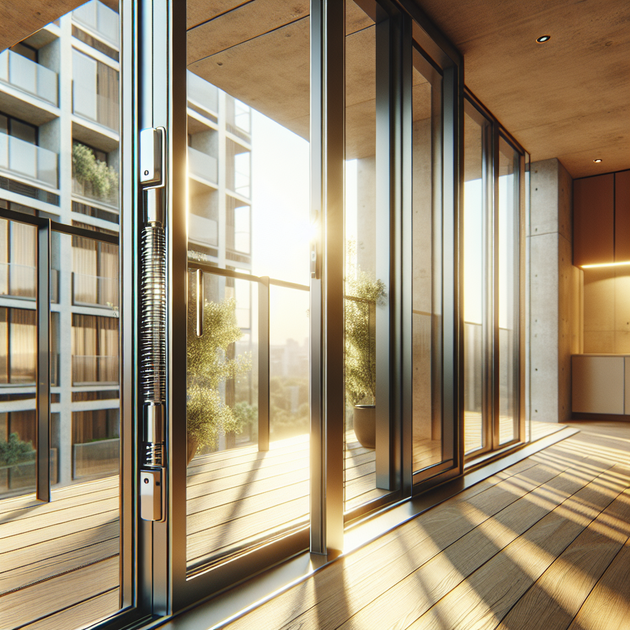Ever wondered how some homes manage to keep their glass balcony doors scratch-free after years of daily use? Glass doors look great but can be one careless moment away from a costly crack or chip—especially around tricky spots like the window sill.
If you’ve just moved into a new place (or you’re simply looking to prevent future damage), setting up reliable impact protection for your balcony door is easier than you might think. Here’s how one clever approach can save both your nerves and your glass.
Why Impact Protection Matters for Balcony Doors
Balcony doors are often prime targets for accidental bumps—think groceries in hand or arms full of laundry. Even if you’re careful most days, all it takes is one slip or a strong breeze for the door to slam shut against the frame or window sill. That sudden force can crack or chip the glass—a repair nobody wants.
Good news: adding an extra layer of impact protection doesn’t have to be expensive or time-consuming. In fact, using simple materials like springs and buffers, you can set up a system that absorbs shocks before they reach the fragile parts of the door.
How to Build Quick DIY Impact Protection
The solution is surprisingly straightforward and requires only basic tools and materials—perfect if you want something fast that still does the job well.
Here’s what you’ll need:
- Two sturdy springs (one as backup in case the other fails)
- A buffer pad (felt or rubber works well)
- Mounting brackets (to attach springs securely)
- Screws or adhesive (depending on your frame material)
- (Optional) A 3D printer if you want custom-fit holders
The double-spring setup is key here—it means if one spring ever wears out or snaps unexpectedly, the second will still protect your glass. This redundancy isn’t just overkill; it’s smart planning for long-term peace of mind.
For more details on choosing materials that absorb shock best, check out this guide from Family Handyman, which covers weatherstripping but applies many similar principles.
Step-by-Step Setup Guide
Ready to get started? Here’s a quick breakdown:
- Measure the gap between your open balcony door and the window sill.
- Attach one end of each spring to the stationary frame near where the door swings open.
- Securely fix buffer pads so they’ll take any direct hit instead of the glass.
- If using custom brackets (like those made with a 3D printer), print and install these first.
- Test by gently swinging the door open—make sure both springs engage smoothly.
Most folks can complete this project in under two hours—one hour to assemble everything and one more if printing custom parts.
A Real-World Example: Lessons from Experience
One new resident was surprised to find his own balcony glass still flawless after more than a decade—despite no visible impact protection in place when he moved in. After thinking about it (and learning there was a second unused balcony door), he realized luck might’ve played a big part.
Wanting peace of mind, he built his own double-spring buffer system in just an hour. The installation was so quick he couldn’t believe he hadn’t done it sooner! Now he feels much better knowing his main balcony entry is protected—even on days when clumsiness strikes.
Sometimes it’s not about being overly cautious; it’s about making smart upgrades before accidents happen.
Why Use Double Springs?
Here are some reasons why a backup spring makes sense:
- Redundancy: If one spring fails over time, there’s always another ready.
- No added complexity: Installation stays simple.
- Peace of mind: You won’t worry every time someone swings open that heavy glass panel.
If you’re interested in other clever home safety tricks, sites like This Old House offer solid advice on everything from repairs to maintenance.
The Takeaway: Protect Before You Regret
Glass doors invite sunlight—and sometimes trouble. Installing simple impact protection makes daily life safer without changing how you use your space. Even if everything seems fine now, adding this quick upgrade could mean years without unexpected repairs.
Ever had a near-miss with a swinging patio or balcony door? What solutions have worked best for keeping damage at bay?

Leave a Reply